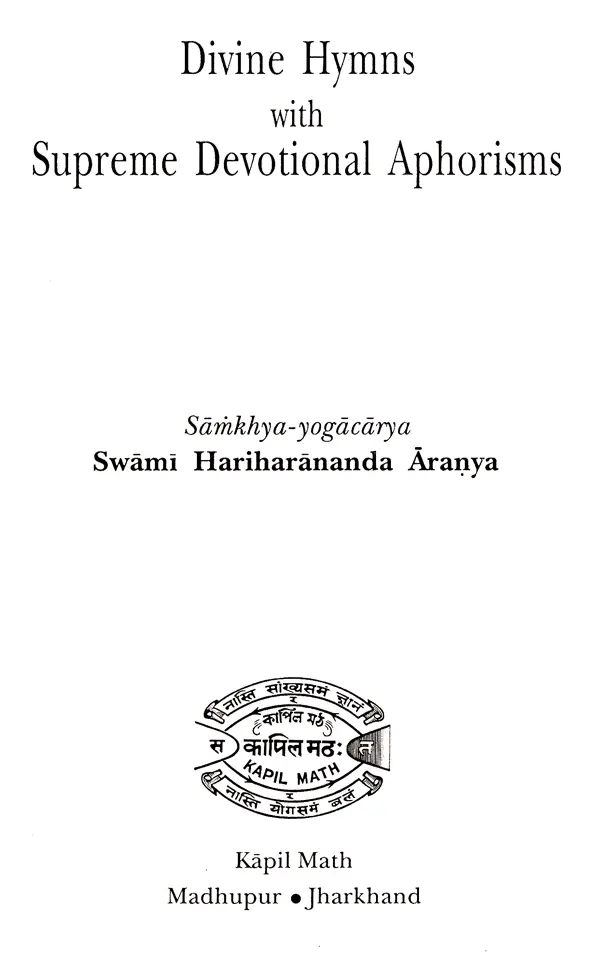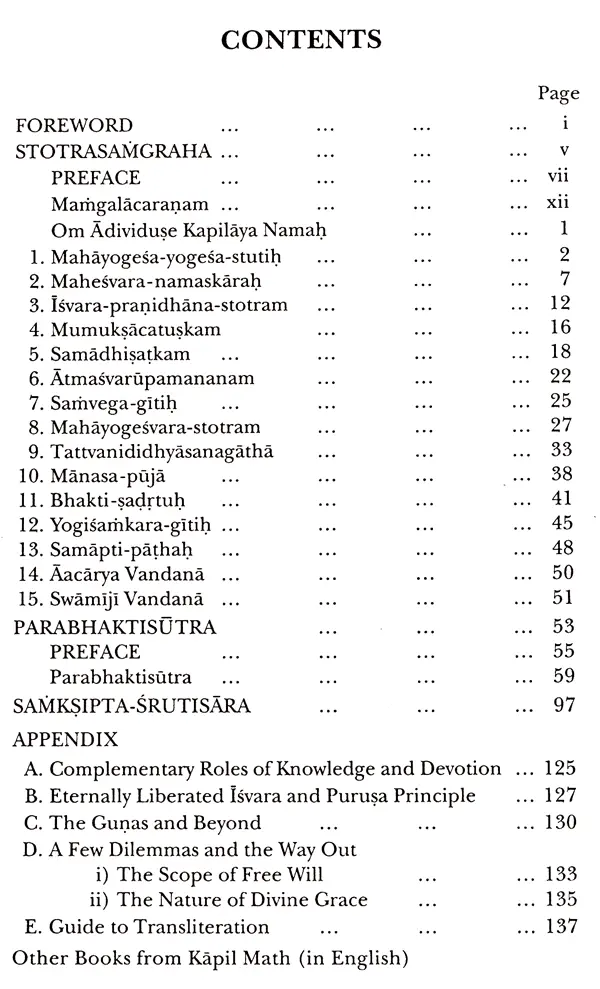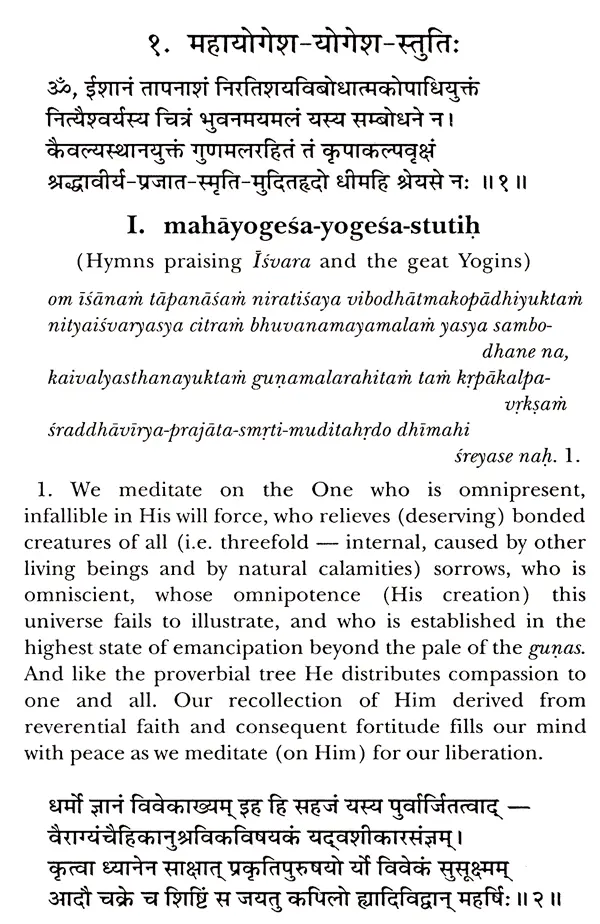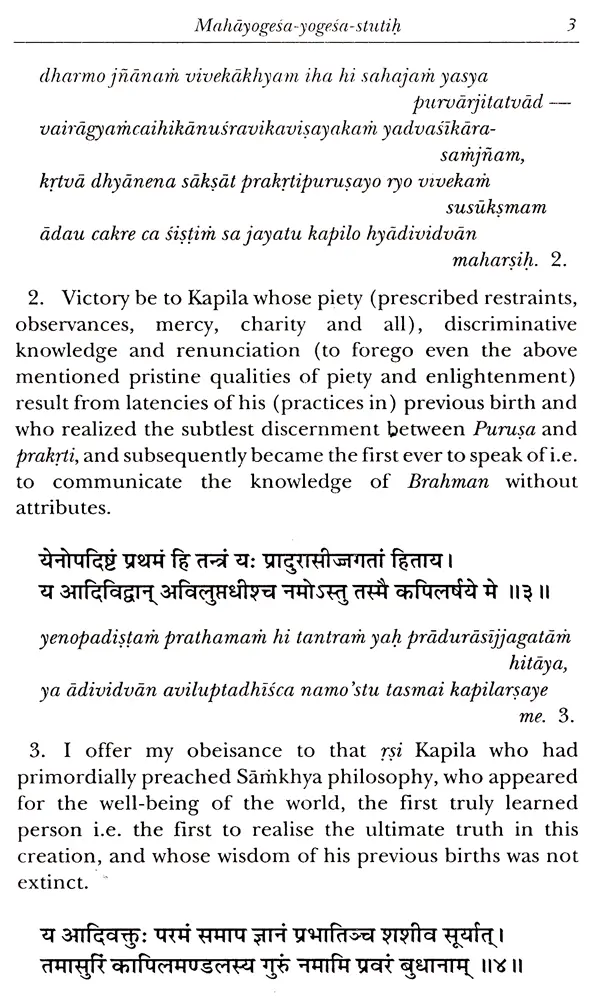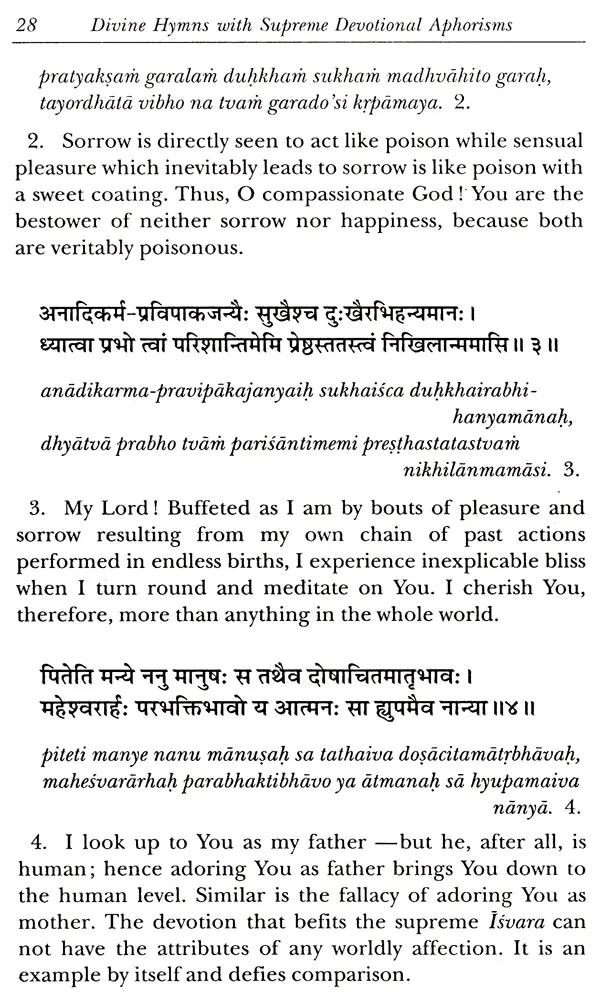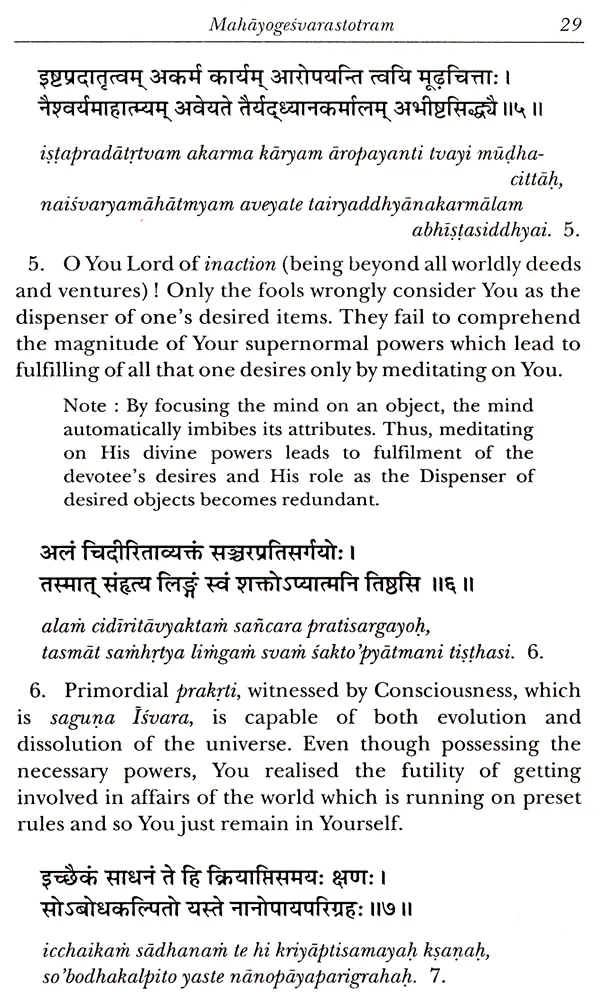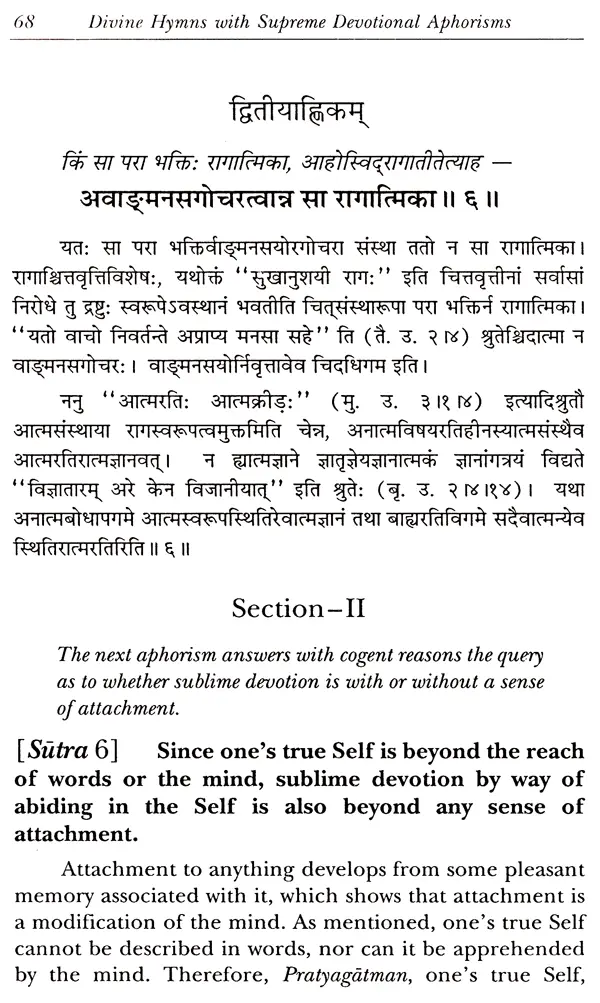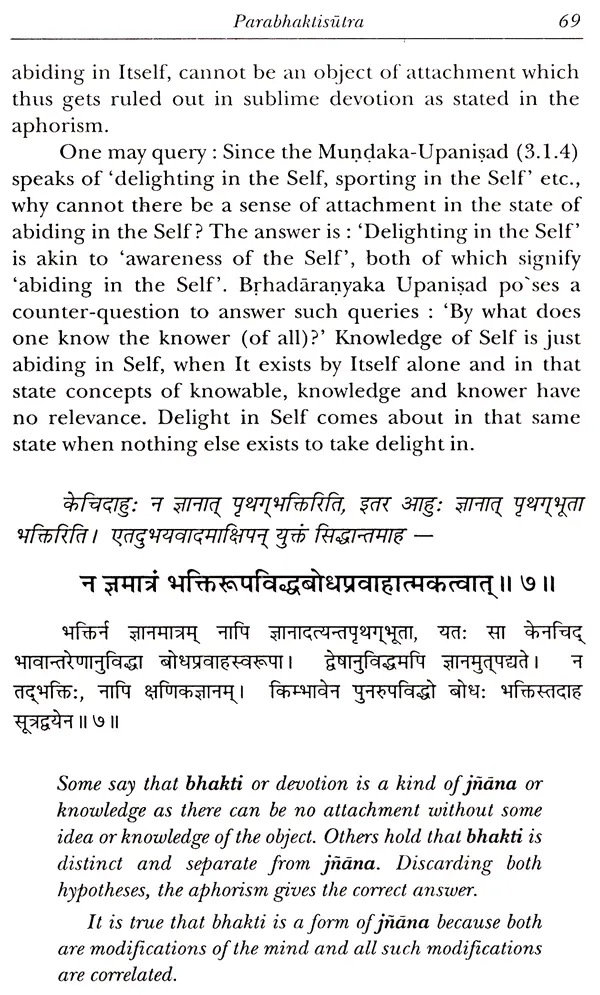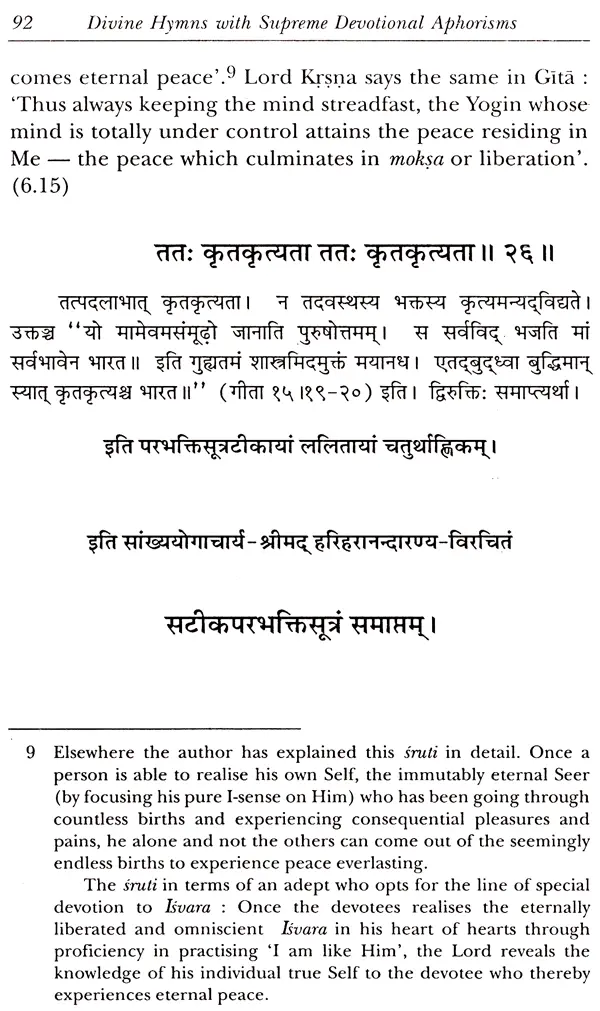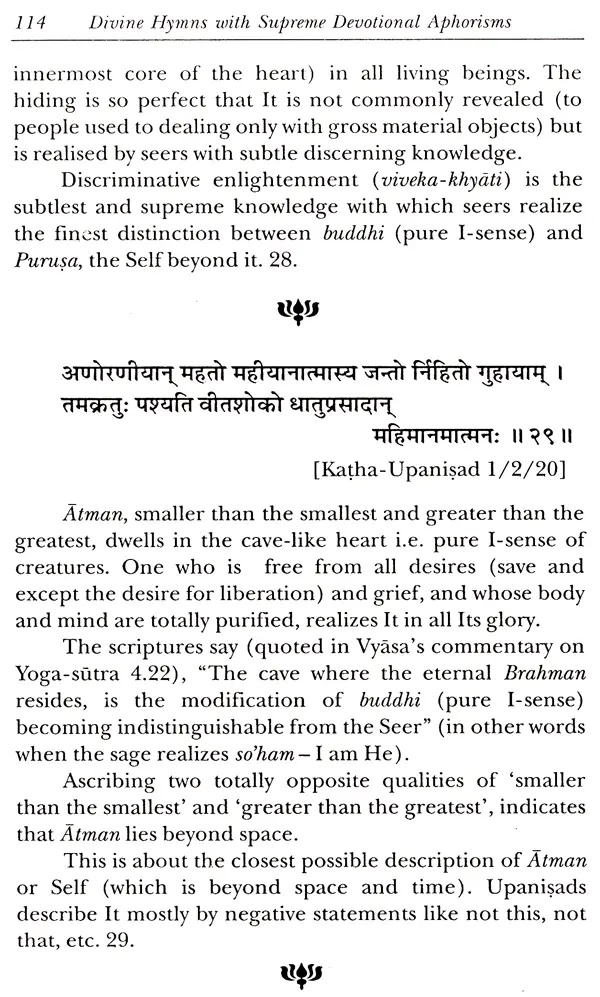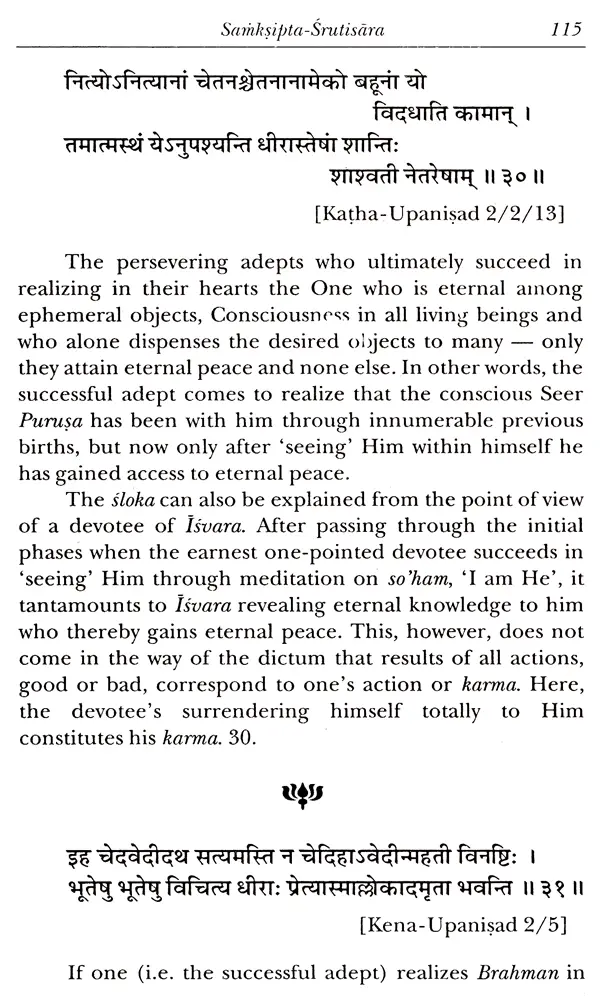
Divine Hymns with Supreme Devotional Aphorisms
Book Specification
| Item Code: | UAH328 |
| Author: | Hariharananda Aranya |
| Publisher: | Kapil Math, Madhupur |
| Language: | English |
| Edition: | 2007 |
| ISBN: | 9788187928331 |
| Pages: | 137 |
| Cover: | PAPERBACK |
| Other Details | 8.50 X 5.50 inch |
| Weight | 240 gm |
Book Description
Swami Hariharananda Aranya (1869-1947) tackled the problems of widespread misconceptions that Samkhya-yoga philosophy, besides being atheistic has no time for devotion, by writing in simple Sanskrit/Bengali (a) short and easy to memorize hymns, (b) cogent aphorisms with explanatory notes and (c) brief essays.
The book has a representative sample of these, plus Quintessence of Upaniṣadic Teachings, which he had carefully prepared and interpreted to help sincere readers /spiritual aspirants. All these are being published in English for the first time.
The Vedas as also the later scriptures say that the great rşi Kapila was the first to attain kaivalya, liberation from all miseries for all time to come. Out of compassion he passed on that supreme knowledge to his deserving disciple Asuri who in turn instructed his able disciple Pancasikha. Thus the stream of highest wisdom was kept pristine and vibrant, and in course of time helped Patañjali, Lord Buddha and Vyasadeva to attain salvation.
It came to be known as Samkhya-yoga and gained acceptance as the life-line of Hinduism. Even to-day one has to pay homage first to the three earliest exponents Kapila, Asuri and Pañcaśikha at the time of offering oblations to one's deceased ancestors. Likewise in the procedures of the more formal and ceremonial pujās meditation on the tattvas or principles of Samkhya is included as an essential item.
From time immemorial Samkhya has been practised in India for relieving agonies and for attaining peace. Though, in later times, Sāṁkhya has been described as jñana-yoga and Yoga as karma-yoga (Gita 3/3). But that Samkhya-yoga is not two different paths, rather together they form the unique path of attaining peace, is also very clearly and firmly mentioned in the Gitä.
Samkhya-yogācārya Swami Hariharananda Araṇya has, in his preface to the Patañjala Yoga-darśana, very cogently stated, "In fact, Samkhya is the theoretical and Yoga the practical aspect respectively of the mokṣa-dharma (way of liberation)". That is, in order to attain liberation one has to realise the twenty-five principles or tattvas of Samkhya through practice of Yoga.
**Contents and Sample Pages**
